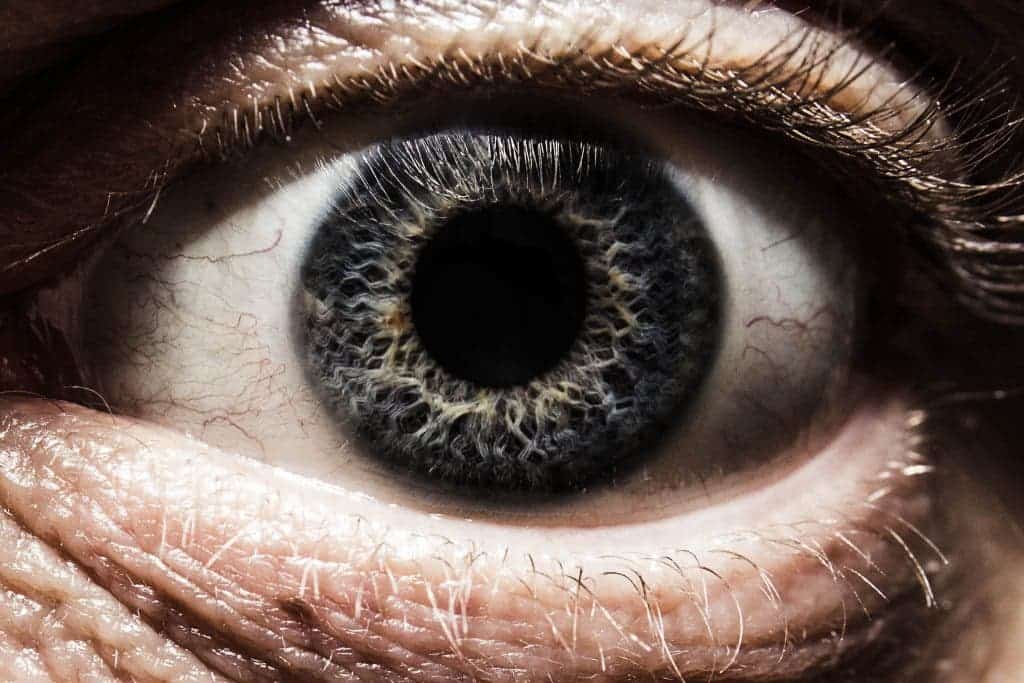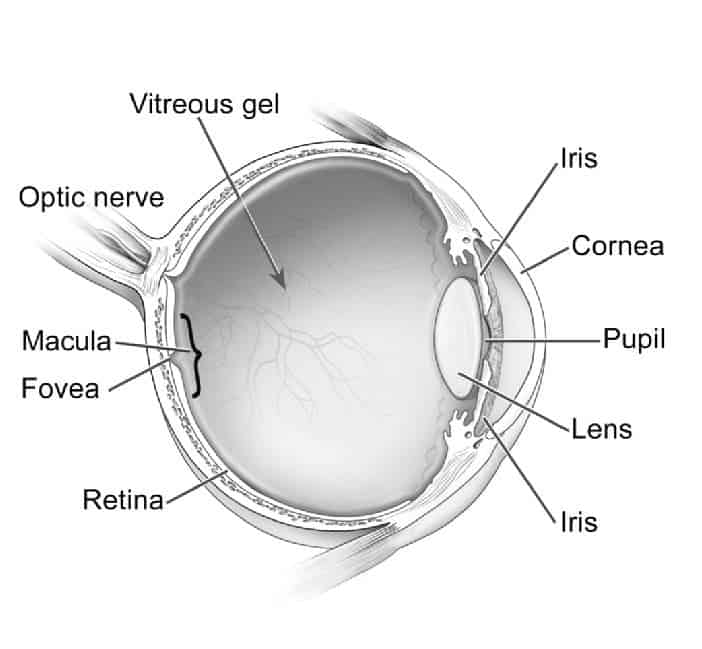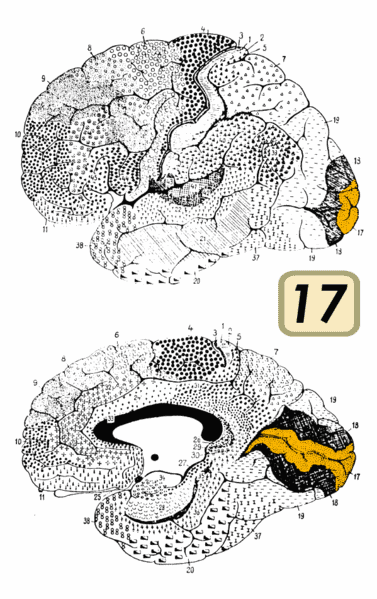
Doing some light reading
Touch interprets changes of pressure, texture and heat in the objects we come in contact with. Hearing picks up on pressure waves, and taste and smell read chemical markers. Sight is the only sense that allows us to make heads and tails of some of the electromagnetic waves that zip all around us — in other words, seeing requires light.
Apart from fire (and other incandescent materials), bioluminiscent sources and man-made objects (such as the screen you’re reading this on) our environment generally doesn’t emit light for our eyes to pick up on. Instead, objects become visible when part of the light from other sources reflects off of them.
Let’s take an apple tree as an example. Light travels in a (relatively) straight line from the sun to the tree, where different wavelengths are absorbed by the leaves, bark and apples themselves. What isn’t absorbed bounces back and is met with the first layer of our eyes, the thin surface of liquid tears that protects and lubricates the organ. Under it lies the cornea, a thin sheet of innervated transparent cells.
Behind them, there’s a body of liquid named the aqueous humor. This clear fluid keeps a constant pressure applied to the cornea so it doesn’t wrinkle and maintains its shape. This is a pretty important role, as that layer provides two-thirds of the eye’s optical power.

Image via flikr
The light is then directed through the pupil. No, there’s no schoolkids in your eye; the pupil is the central, circular opening of the iris, the pretty-colored part of our eyes. The iris contracts or relaxes to allow an optimal amount of light to enter deeper into our eyes. Without it working to regulate exposure our eyes would be burned when it got bright and would struggle to see anything when it got dark.
The final part of our eye’s focusing mechanism is called the crystalline lens. It only has half the focusing power of the cornea but its most important function is that it can change how it does this. The crystalline is attached to a ring of fibrous tissue on its equator, that pulls on the lens to change its shape (a process known as accommodation), allowing the eye to focus on objects at various distances.
Science at its finest.
After going through the lens, light passes through a second (but more jello-like) body of fluid and falls on an area known as the retina. The retina lines the back of the eye and is the area that actually processes the light. There are a lot of different parts of the retina working together to keep our sight crispy clear, but three of them are important in understanding how we see.
- First, the macula. This is the “bull’s eye” of the retina. At the center of the macula, there’s a slight dip named the fovea centralis (fovea is latin for pit). As it lies at the focal point of the eye, the fovea is jam-packed with light-sensitive nerve endings called photoreceptors.
- Photoreceptors. These differentiate in two categories: rods and cones. They’re structurally and functionally different, but both serve to encode light as electro-chemical signals.
- Retinal pigment epithelium. The REP is a layer of dark tissue whose cells absorb excess light to improve the accuracy of our photoreceptors’ readings. It also delivers nutrients to and clears waste from the retina’s cells.
So far you’ve learned about the internal structure of your eyes, how they capture electromagnetic light, focus it and translate it into electro-chemical signals. They’re wonderfully complex systems, and you have two of them. Enjoy!
There’s still something I have to tell you about seeing, however. Don’t be alarmed but….
The images are all in your head
While eyes focus and encode light into the electrical signals our nervous system uses to communicate, they don’t see per se. Information is carried by the optical nerves to the back of the brain for processing and interpretation. This all takes place in an area of our brain known as the visual cortex.

Image via wikipedia
Because they’re wedged in your skull a short distance apart from each other, each of your eyes feeds a slightly different picture to your brain. These little discrepancies are deliberate; by comparing the two, the brain can tell how far an object is. This is the mechanism that ‘magic eye’ or autostereogram pictures attempt to trick, causing 2D images to appear three dimensional. Other clues like shadows, textures and prior knowledge also help us to judge depth and distance.
[YOU SHOULD ALSO READ] The peculiar case of a woman who could only see in 2-D for 48 years, and the amazing procedure that gave her stereo-vision.
The neurons work together to reconstruct the image based on the raw information the eyes feed them. Many of these cells respond specifically to edges orientated in a certain direction. From here, the brain builds up the shape of an object. Information about color and shading are also used as further clues to compare what we’re seeing with the data stored in our memory to understand what we’re looking at. Objects are recognized mostly by their edges, and faces by their surface features.
Brain damage can lead to conditions that impair object recognition (an inability to recognize the objects one is seeing) such as agnosia. A man suffering from agnosia was asked to look at a rose and described it as ‘about six inches in length, a convoluted red form with a linear green attachment’. He described a glove as ‘a continuous surface infolded on itself, it appears to have five outpouchings’. His brain had lost its ability to either name the objects he was seeing or recognize what they were used for, even though he knew what a rose or a glove was. Occasionally, agnosia is limited to failure to recognize faces or an inability to comprehend spoken words despite intact hearing, speech production and reading ability.
The brain also handles recognition of movement in images. Akinetopsia, a movement-recognition impairing condition is caused by lesions in the posterior side of the visual cortex. People suffering from it stop seeing objects as moving, even though their sight is otherwise normal. One woman, who suffered such damage following a stroke, described that when she poured a cup of tea the liquid appeared frozen in mid-air, like ice. When walking down the street, she saw cars and trams change position, but not actually move.


